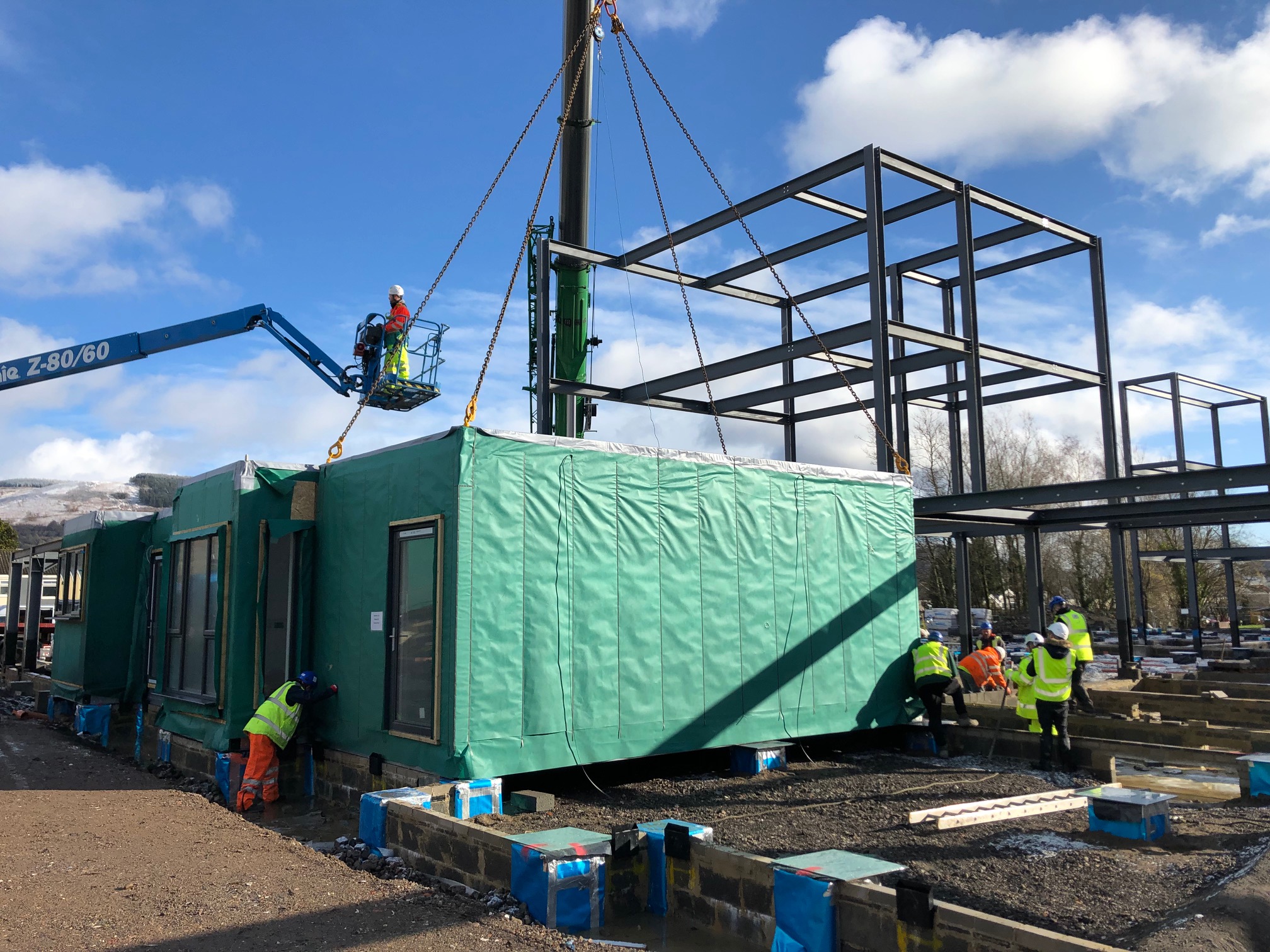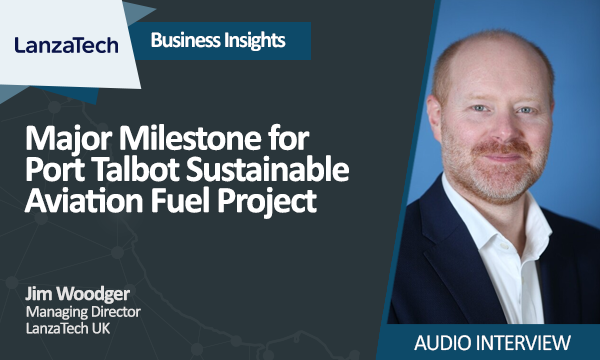
 Written by:
Written by:
Louise Attwood,
Executive Director of Property, Linc Cymru Housing Association
Tudor Butler,
Director, RPA Quantity Surveyors
In the Spring of 2020, Linc Cymru Housing Association and RPA Quantity Surveyors completed an innovative volumetric modular project in partnership with RCT County Borough Council in Aberdare, which consisted of 40 extra care apartments with lounges, restaurant, salon, and community garden.
In this week’s Built Environment column, Louise Attwood, Executive Director of Property at Linc Cymru Housing Association and Tudor Butler, Director at RPA Quantity Surveyors talk to Business News Wales (BNW) about how, together with their teams, they overcame the challenges posed by this modular method of construction.

BNW: Can you give us some background information on how the project started?
Louise: When I joined Linc 4 years ago, we had a target of delivering 1700 new affordable homes. We are a traditional housing association who bought Section 106 homes from large developers and did some self-delivery. With such a big target I looked at a different way of doing things. I previously worked in London where modular was becoming common on larger projects. After attending a Resi conference and hearing Tom Bloxham speak, I knew this was something I wanted to introduce. I loved the design of the HOUSE. When we won the bid with RCT to deliver 300 homes and commercial space in 5 years, modular seemed to be an obvious solution.
Tudor: We’ve worked with Linc delivering numerous similar developments over many years, and given the tight timescales set for this particular development, it seemed like a great opportunity to deliver an innovative project. Modular Construction isn’t exactly a new concept; we need only look back to the immediate post war years of the late 1940s and early 1950s to see the original form of modular housing in the guise of the ‘prefab’ homes, which were introduced as a temporary solution to the high demand for housing following a ‘global crisis’ and the damage caused from bombing raids during the Second World War. Many of these homes (which were originally only planned to be in use for 10 years) are still scattered across South Wales today.
BNW: Did you have any previous experience of delivering modular construction projects?
Louise: No, but we worked with a Welsh modular provider to go through all the detail; little things such as the area of the building had to grow because of the size of the walls. We spent a lot of time considering how we could transport the modules to such a tight site in a traditional Valleys town. In the end, each apartment was made up of two modules and stitched together on site. The larger areas had a steel frame which the modules then connected onto.
Tudor: It was a steep learning curve for us all, including the architects, engineers and building control. We had the added challenge that the planners wanted the building to look traditional to match its surroundings.
Louise: The planners wanted us to blend in, which is always a challenge with a building of this scale amongst a row of terraced houses but looking at the finished result you would never know that it was constructed using MMC. One thing we did learn, was that using the traditional “wet trades” on the outside slowed us down due to the Welsh weather but it did allow us to gain time as all the modules were delivered with flooring, kitchens, bathrooms, tiling and even a mist coat of paint!
BNW: That must have been a big risk to undertake such a large project with a new build technique?
Louise: It was, but as a Housing Association we see the impact that the housing shortage has on a daily basis. Our Board together with our partners realise that we must keep trying new things in order to overcome skills shortages and to house people faster than ever, while maintaining consistent levels of quality. The Board, Council and Welsh Government, who helped fund the project via the innovative homes Program Y1 and capital grant, were all incredibly supportive.
Tudor: One of the biggest challenges we faced was to explain that the general prefab perception of modular is no longer the case in the 21st Century. A factory visit demonstrated the high quality of the product and the quality control was exceptional, just as in any other manufacturing industry. We de-risked the project by taking out advance payment bonds and altering our valuation processes.
We had traditional monthly valuations on the ground works and factory visits fortnightly to sign off the valuations. This meant a significant amount of travelling, but it was exciting to see the modules move from the beginning of the factory to the end within 12 days.
Probably one of the biggest challenges for the industry going forward, is how to provide cashflow for the modular manufacturer whilst at the same time not exposing the client to extra financial risk, since the concept of paying for materials in advance of them being delivered to site is a significant step change for the industry.
BNW: Did everything go to plan?
Louise: No development is ever straightforward, and it was a nail-biting moment watching the first and last modules being craned into place.
Tudor: The main challenge came about 95% of the way into the project. All modules were on site and we were finishing off the outside and external works when the module provider got into financial difficulty. We decided to part ways and finish the job off directly. We still delivered the scheme on the date that we promised despite the challenges and there being a global pandemic!
BNW: Would you do this again?
Louise: Definitely! We learnt a lot and the quality of the product is fantastic. Our business plan includes a target of hitting 20% of our new homes using MMC. We are currently onsite with a cross laminated tower in Cardiff, so it can’t have been that bad. It’s a shame we don’t have any volumetric modular manufacturers left in Wales as it’s not ideal transporting large modules from mid and North England. I am sure it’s something that Welsh Government and Local Authorities are looking at supporting and we would welcome working in partnership with anyone looking to bring a factory to Wales.
Tudor: Due to the high standards of control and processes, volumetric often outperforms traditional construction from a fabric first perspective, so it can be very green which fits with the Welsh Government agenda for housing.
Louise: The scheme in Aberdare has air source heat pumps, is built to BREEAM Excellent and is an all-electric build, five years ahead of government regulations.
BNW: Are there any barriers to delivering your vision of a 20% MMC build program?
Tudor: The supply chain and training. Design for manufacture is relatively new and needs to be taught as part of the standard curriculum. It’s an interesting field of engineering and the benefit is that you don’t have to stand in the rain to build it. Construction is still seen as a muddy, male dominated industry but like the legal profession, this alternative construction route could improve diversity both in terms of gender and age.
Louise: We are lacking comparable evidence from a valuation perspective. Lenders think this is new, but its common practice in the commercial market although that viewpoint hasn’t filtered down to the residential lending market. Our Aberdare scheme is testament that modular can fit into almost any environment.













